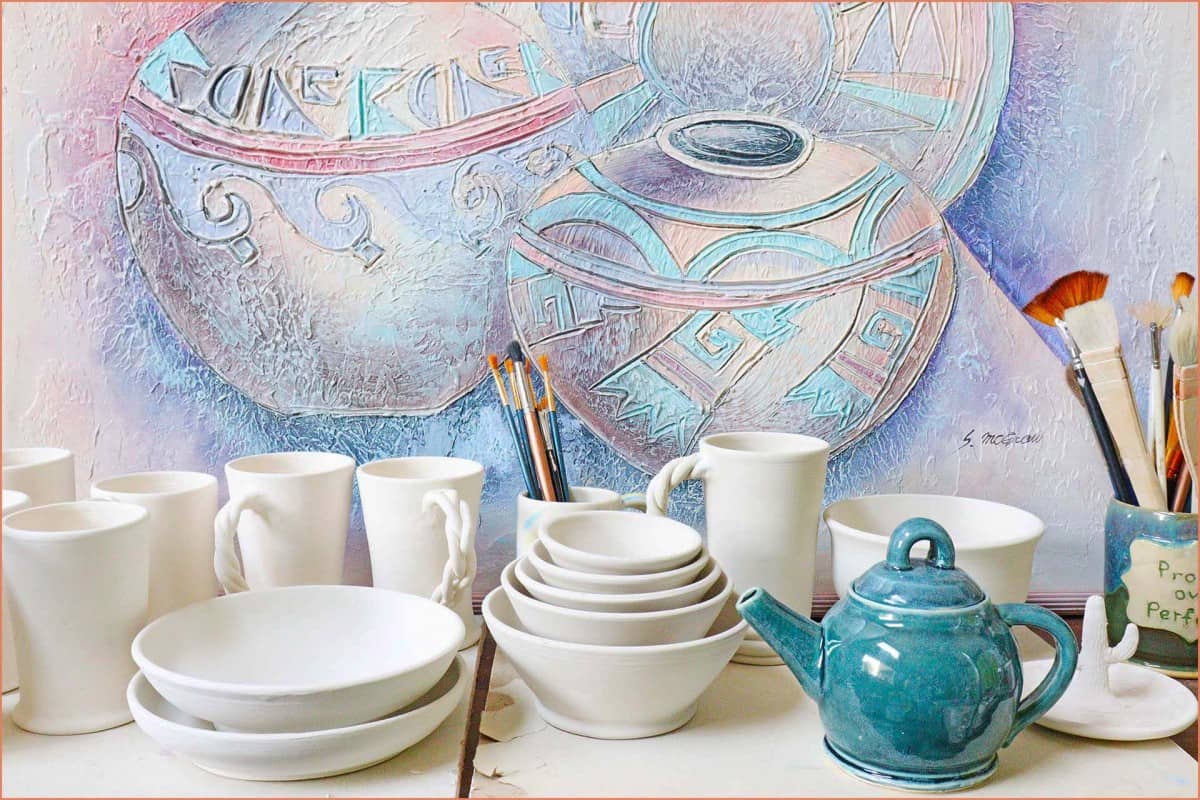
When it comes to the world of art and craftsmanship, ceramics have always held a special place. These versatile and durable materials have been used for centuries to create stunning pieces that range from delicate figurines to functional everyday items. But did you know that ceramics have a fascinating history and unique properties that set them apart from other materials? In this article, we will explore 11 intriguing and lesser-known facts about ceramics that will surely pique your interest. So, whether you’re a ceramics enthusiast or simply curious about this ancient art form, get ready to dive into the world of clay and glaze as we uncover some remarkable facts about ceramics.
Key Takeaways:
- Ceramics have a rich history dating back thousands of years, from ancient civilizations to modern-day artistry, showcasing their enduring beauty and cultural significance.
- With their durability, versatility, and wide range of applications, ceramics continue to captivate us with their timeless artistry and craftsmanship, bridging the past, present, and future.
The Origins of Ceramics date back thousands of years.
Ceramics have a rich history that stretches back to ancient civilizations. The production of ceramics can be traced as far back as 24,000 BC, with artifacts found in various parts of the world. From the delicate porcelain of China to the vibrant pottery of the Mediterranean, ceramics have been an integral part of human culture for millennia.
Ceramics are made from natural materials.
One of the captivating aspects of ceramics is the materials used to create them. Most ceramics are made from natural materials such as clay, sand, and water. These materials are mixed together to form a moldable substance, which is then shaped, dried, and fired to create the final ceramic product.
Ceramics have a wide range of applications.
From functional household items to exquisite works of art, ceramics have a diverse range of applications. Ceramic materials are used in the production of everyday items like plates, cups, and tiles, as well as decorative pieces such as sculptures, vases, and figurines. The versatility of ceramics allows for endless possibilities in design and functionality.
Ceramics can withstand high temperatures.
One of the remarkable properties of ceramics is their ability to withstand extreme temperatures. This makes them ideal for use in applications that involve heat, such as in kilns, ovens, and engine components. Ceramics are known for their excellent thermal insulation and resistance to thermal shock.
Ceramics are highly durable.
Compared to other materials, ceramics are renowned for their durability. They are resistant to wear and tear, making them long-lasting and able to withstand heavy use. This durability makes ceramics a popular choice for construction materials, as well as for products that require strength and resilience.
Ceramics can be found in various shapes and sizes.
From small delicate teacups to large architectural tiles, ceramics can be found in a wide array of shapes and sizes. The flexibility of ceramic materials allows for intricate and detailed designs, as well as larger-scale applications. This versatility makes ceramics an attractive choice for artists, designers, and architects.
Ceramics can be glazed for added beauty and protection.
Glass-like coatings known as glazes can be applied to ceramics to enhance their appearance and provide additional protection. Glazes can be transparent or colored, adding depth and vibrancy to the ceramic surface. They also act as a barrier, making ceramics more resistant to scratches and stains.
Ceramics have high chemical resistance.
Many ceramics exhibit excellent chemical resistance, making them ideal for applications where they come into contact with corrosive substances. This property makes ceramics suitable for use in laboratories, chemical plants, and other environments where chemical resistance is crucial.
Ceramics have low electrical conductivity.
Unlike metals, ceramics are known for their low electrical conductivity. This property makes ceramics a preferred choice for electrical insulators. They are used in the production of insulating materials for electrical wiring, circuit boards, and other electronic components.
Ceramics can be recycled.
Concerns about the environment and sustainability have led to increased focus on recycling materials. Ceramics, unlike some other materials, can be recycled and repurposed. Broken or unwanted ceramic items can be crushed and used for various applications, reducing waste and conserving resources.
Ceramics are an important part of cultural heritage.
Throughout history, ceramics have played a significant role in the expression of culture and artistry. From ancient pottery with intricate designs to contemporary ceramic sculptures, ceramics have been used to convey stories, traditions, and artistic visions. They are cherished as cultural artifacts and contribute to the preservation of our collective heritage.
Conclusion
Ceramics are an incredibly fascinating and versatile material with a rich history and numerous applications. From ancient civilizations to modern advancements, ceramics have played a significant role in our lives. Whether it’s the stunning beauty of pottery, the strength of modern ceramics in aerospace engineering, or the heat resistance of ceramic cookware, there’s no denying the importance and intrigue of ceramics.
Exploring the world of ceramics reveals a wealth of knowledge and appreciation for this remarkable material. The 11 facts highlighted in this article are just a glimpse into the many dimensions of ceramics. From their composition to their uses, ceramics continue to captivate and inspire us.
So, the next time you hold a delicate porcelain teacup or marvel at the intricate tiles in a historical building, remember the fascinating world of ceramics behind it.
FAQs
1. What are ceramics made of?
Ceramics are typically made of a mixture of clay, minerals, and other inorganic materials that are shaped and fired at high temperatures.
2. What are some common applications of ceramics?
Ceramics have a wide range of applications, including pottery, construction materials, electrical insulators, aerospace components, and biomedical implants.
3. Are ceramics waterproof?
Most ceramics are inherently waterproof due to their composition and firing process. They are resistant to water absorption and can withstand exposure to liquids.
4. How durable are ceramics?
Ceramics are known for their durability and hardness. They can withstand high temperatures, resist wear and tear, and have excellent strength properties.
5. Are all ceramics brittle?
While ceramics are generally known for being brittle, modern advancements have led to the development of ceramic materials with improved toughness and flexibility.
6. Can ceramics be recycled?
Yes, ceramics can be recycled. However, the recycling process can be challenging due to the high temperature requirement for melting ceramics.
7. Are ceramics environmentally friendly?
Ceramics are considered environmentally friendly as they are made from abundant natural materials, and their durability reduces the need for frequent replacements.
8. Is ceramic cookware safe to use?
Yes, ceramic cookware is generally safe to use. It is non-toxic, non-reactive, and provides even heat distribution. However, it’s essential to follow proper usage and care instructions.
9. Can ceramics be used for artistic purposes?
Absolutely! Ceramics have been used for artistic expression for centuries. Pottery, sculptures, and intricate tile designs are just a few examples of ceramics in the world of art.
10. How long have ceramics been around?
Ceramics have been around for thousands of years. The first known ceramics date back to ancient civilizations such as China, Egypt, and Mesopotamia.
11. Can ceramics be customized?
Yes, ceramics can be customized through techniques such as glazing, painting, carving, and molding, allowing for endless possibilities in terms of design and aesthetics.
Was this page helpful?
Our commitment to delivering trustworthy and engaging content is at the heart of what we do. Each fact on our site is contributed by real users like you, bringing a wealth of diverse insights and information. To ensure the highest standards of accuracy and reliability, our dedicated editors meticulously review each submission. This process guarantees that the facts we share are not only fascinating but also credible. Trust in our commitment to quality and authenticity as you explore and learn with us.


